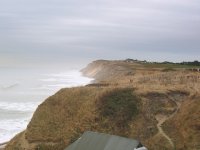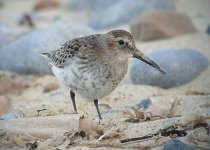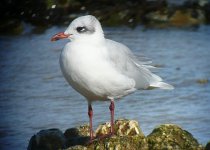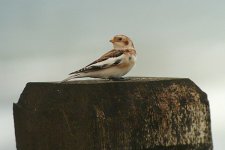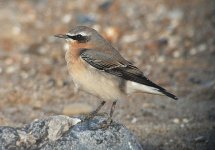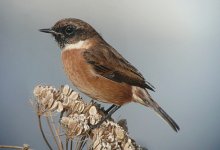If you do decide to walk from UEA it's a nice stroll covering some pretty spots. Unlikely to get any rarities but a good way of getting a year list started. From the Broad head off to Eaton via the
footpath that leads out from the dragonfly pond. (This is your best bet for lesser-spotted in Norwich - which isn't saying much, I've only managed it once in the last four years.) At Eaton cross the road and continue down past the supermarket. At the end of the road you'll find a footpath. Just off this path on your right you will find
Marston Marsh LNR, which you can walk round and return to the footpath further down . At the end of the path is
Danby Wood LNR. Cross the road and walk down to the hotel and turn left. At the lights turn right and go down to the railway bridge. At this point you have a choice: turn left down the
Lakenham way to Queen St, then turn right and walk down to the County Hall roundabout and cross into Trowse; or go under the bridge. If you go under then at the bottom of the road there's the lane to
Cooper's Wood LNR to your right as a possible detour. Turning left round the corner continue to the next right. Follow this down to the end and turn right. (There's an interesting bit to your left just down here that you can walk round that goes along the river and back along the mill leet). Just over the railway bridge there's a footpath to your left. This leads you into the
damselfly way via the field that once held the Arminghall Wood Henge. At the bottom of the way you're in Trowse and your two possible routes combine. Walk into Trowse till you come to the village sign. To your right, behind the church is
Trowse Church LNR, to your left is
Trowse Flower Meadow. Go down the lane here. About 150 yards in to your right is
Trowse Woods, but continue down for
Whitlingham Broad.
In a couple of years time there will be a footbridge from whitlingham over to Cary's Meadow, but for now (if you are feeling very fit) you can follow the road past Whitlingham till you come to the flyover for the outer ringroad. Just to your left here is the entrance to
Whitlingham Marshes. Go up and use the flyover to get you across the river. At the roundabout head left into Norwich. At the traffic lights where you can turn right into Thunder Lane you will see a turning to the left (also called Whitlingham Lane) which will lead you down to Thorpe Marshes and gravel pit. There's a circular walk here but it's very muddy in winter and sometimes under a foot of water in places. Carry on down the road into Norwich till you come to the Broadland council offices. Just opposite here is the entrance to Cary's Meadow.
Carry on to Norwich station (past the
Dell and
Rosary Cemetary), turn right and follow the river, past
Cow Tower, til you reach Magdelen street. Cross the bridge and turn left. At the T junction turn right, then at the bottom turn left. Follow along till you come to the roundabout at the bottom of Grapes Hill. Just in front of Halfords is the start of the
Riverside Way, which will get you to Anderson's Meadow. Just past here is the
Wensum LNR and the Sweet Briar Marshes incidently. Leave the way at Anderson's across the inner ring road bridge at the far end. Walk up the road opposite marked no entry to cars. At the end and slightly to your left is a road going up the hill. This will lead you, past the Cemetary (site of the first Norfolk record of Bombus hypnorum this year) to the fiveways roundabout and back to UEA.
(There's a longer option that involves staying on the marriotts way to Gunton Road park in Costessey and then returning via the Southern Millennium Green LNR in Bowthorpe and
Earlham Church Marsh if you're feeling super fit - but I've only done that once and I couldn't walk the next day!)





